Discover the remarkable craftsmanship of the Clay Tempered Sword, where tradition meets excellence in Japanese sword making. Our Clay Tempered Sword collection showcases blades with superior hardness and flexibility, achieved through the meticulous clay tempering process. Designed for both dedicated collectors and passionate enthusiasts, each sword is a work of art that embodies the samurai's enduring spirit. Elevate your collection with a Clay Tempered Sword, a symbol of refined beauty, strength, and precision that will captivate your admiration and inspire your passion for the noble art of the katana.
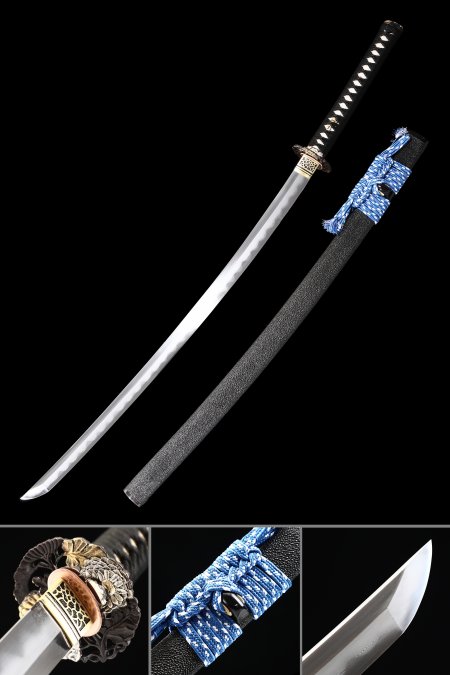
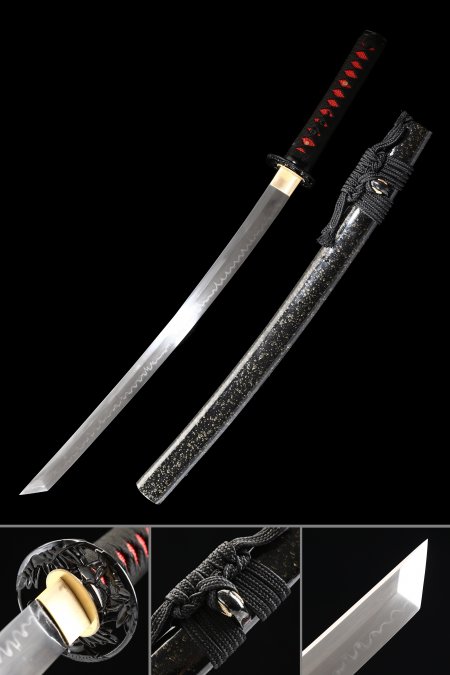
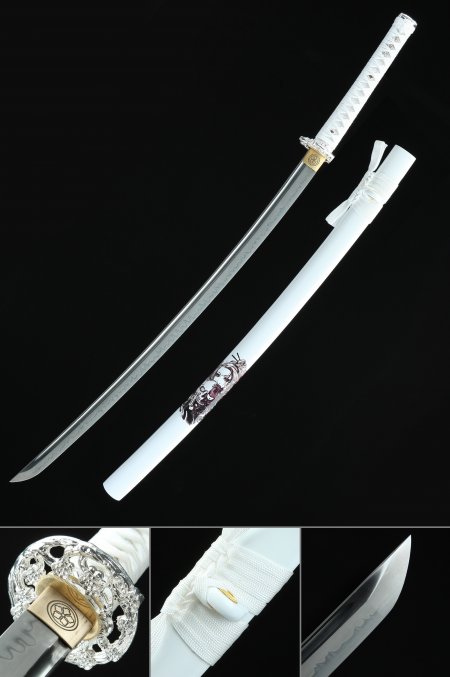
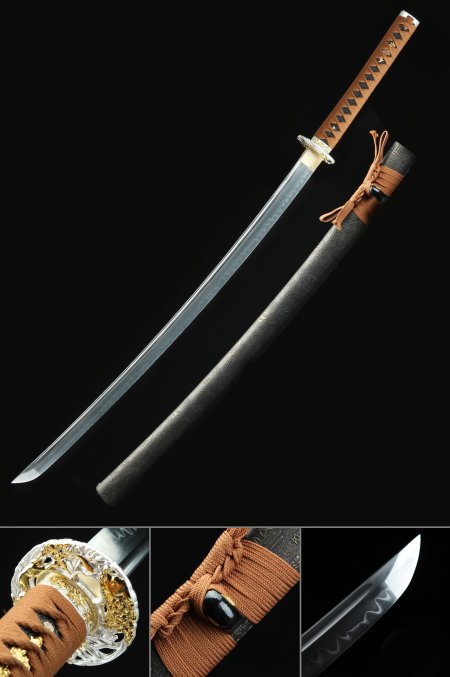
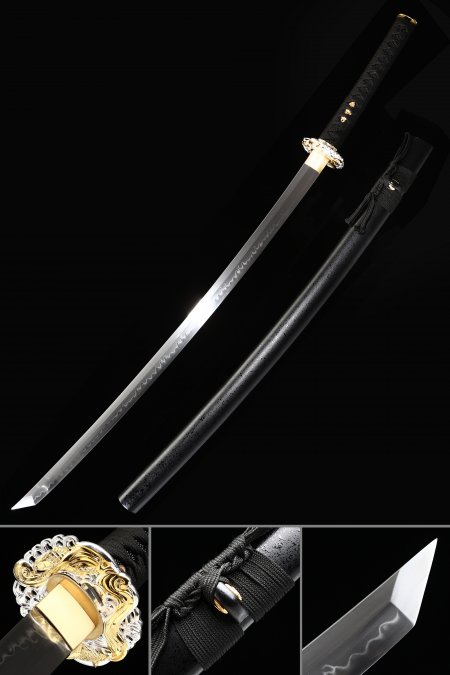
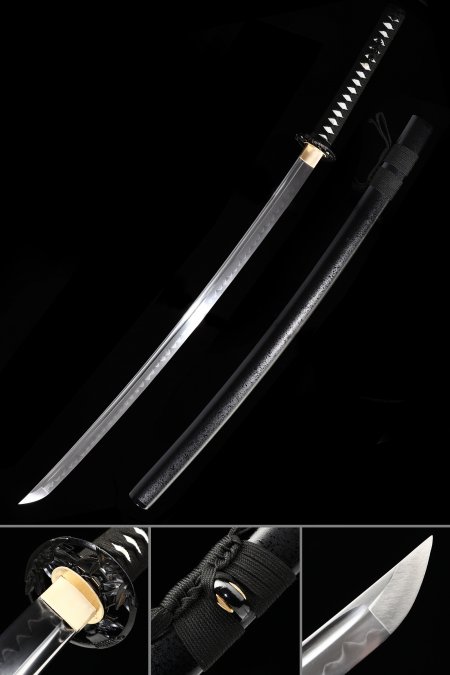
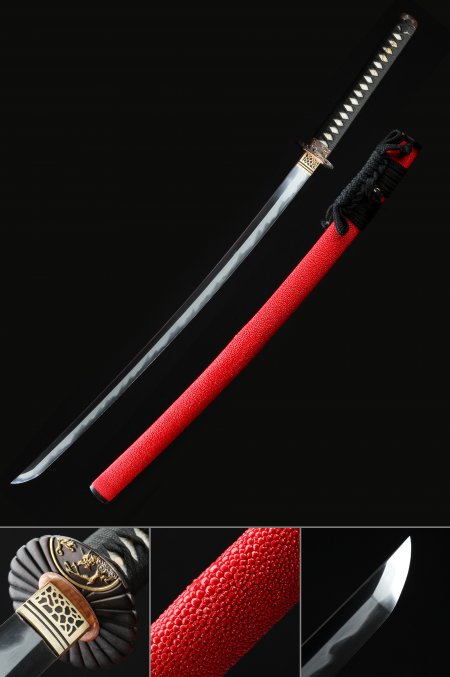
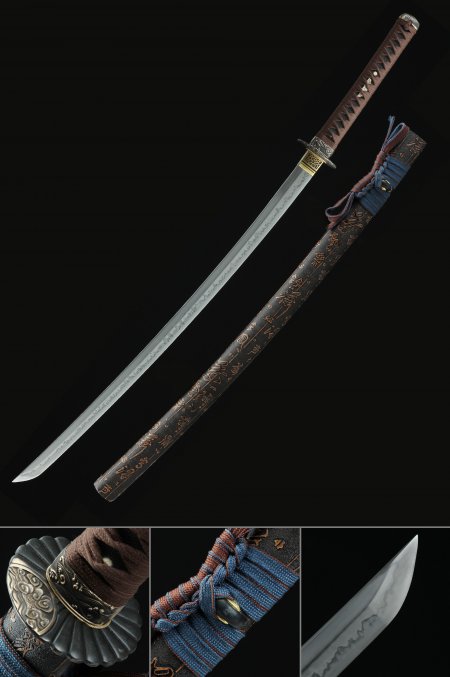
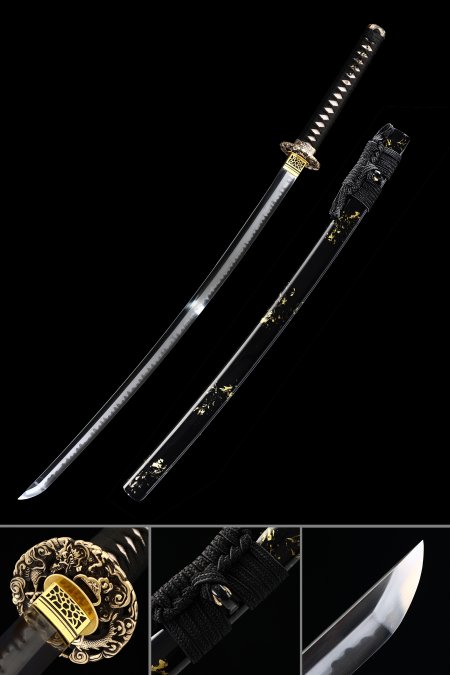
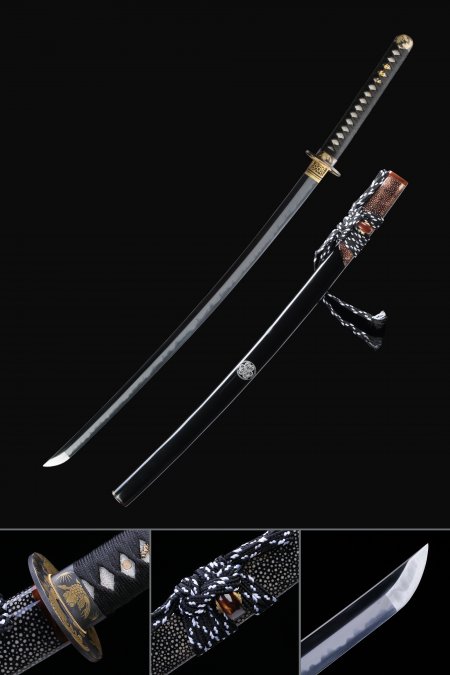
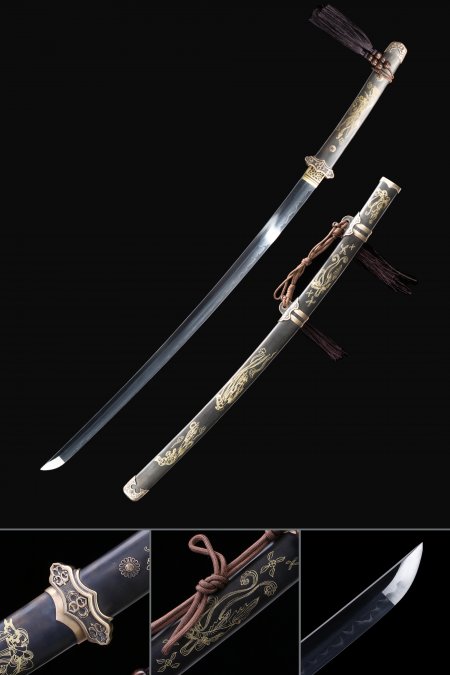
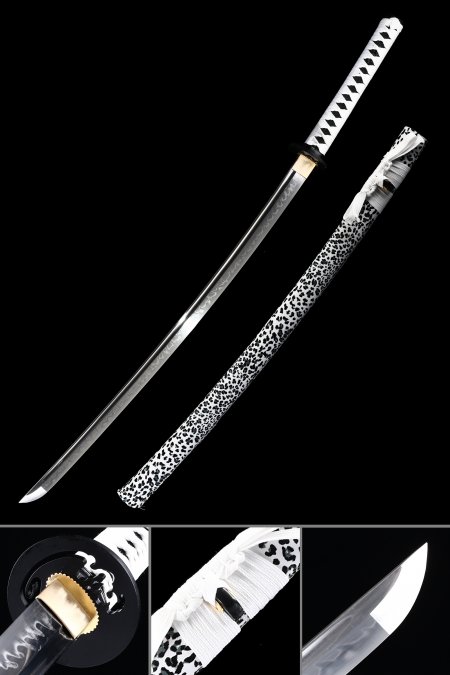
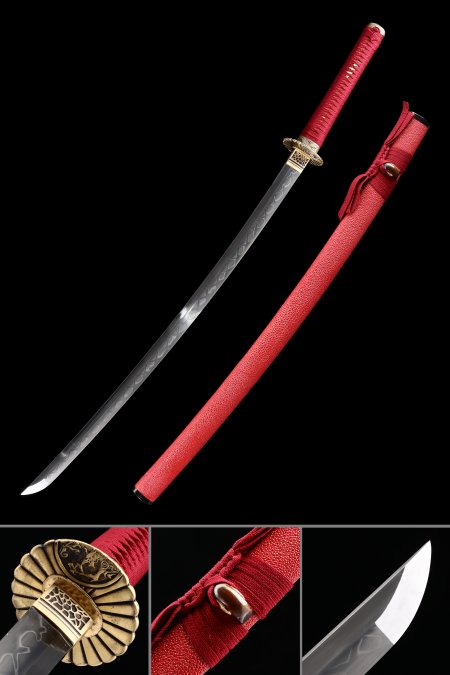
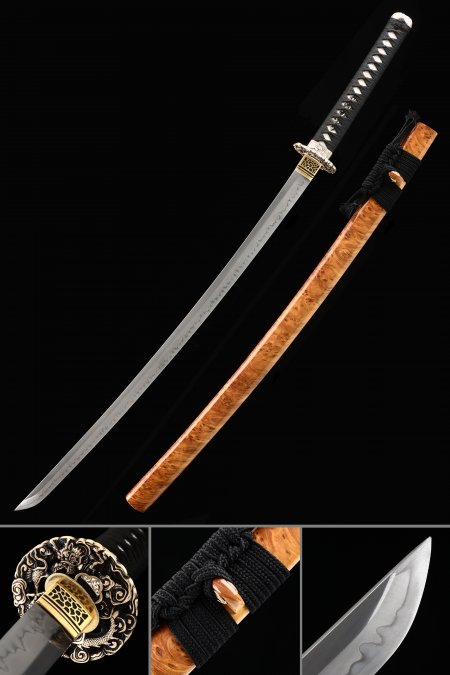
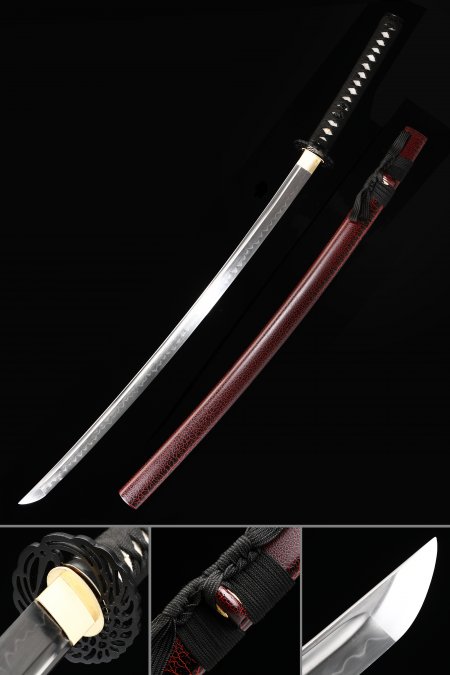
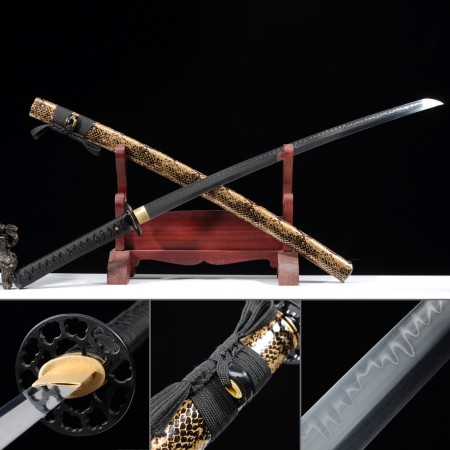
This is katana is extremely beautiful and well made! Would recommend to anyone interested in looking for one! Very great craftsmanship and I can only imagine the time and effort put into this masterpiece!
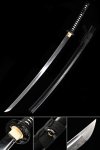 |
Handmade Japanese Katana T10 Carbon Steel Hand Forged With Black Scabbard |
I like knives and I have different types of knives and hand sharpener, electric sharpener (Tormek). I keep my knives always sharp. First time owner of a Katana. First impression is good. The steel is original Damascus. The hamon looks good. r
r
Things I did not like much:r
1. It was written that it is razor sharp. No, definitely not razor sharp, even noth sharp. It doesn't cut folded paper towel even though I press much. With fingers, I don't feel the sharpened. After sharpening my knives, I test them and I am what is sharp and what is notr
2. Polish is not good enough. In some points of blade, with my nail, I can easily feel the Damascus layers.r
3. Habaki: design is good, but workmanship looks poor, machine made.r
4. Saya: The thing that really bothered me was the saya. When you shake the blade, it makes wabbling noise. The blade does not perfectly fit to Saya. r
r
I think for this price, it was good enough.
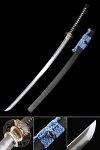 |
Authentic Japanese Katana Sword T10 Folded Clay Tempered Steel Real Hamon |
I received this is perfect condition. Super sharp and you can tell it’s just well built, I liked this specifically cause it’s hard to find the slanted tip on the blade and I think it looks super cool, It’s also hard to find swords that aren’t only decorative, my purpose for buying is decorative but I also want it to be solid and sharp because I don’t want to show off a knock off fake sword, I want to show off something that is legit and this is.
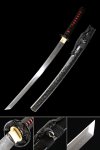 |
Handmade Japanese Wakizashi Sword T10 Folded Clay Tempered Steel With Black Scabbard |
Bought this sword for my brother for his birthday. He loves it! It's light and the weight is well balanced. Everything about this sword from the design to the feel is good
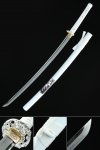 |
Handmade Japanese Katana Sword T10 Folded Clay Tempered Steel With White Scabbard |
T-10 Katana with the rare highly valued true katana point. Just superb. Cuts paper like a sharp razor on a soft beard. Great delivery time. No shipping. These guys should be your only source for katanas! They are the best in the business! L. Phillip
 |
Handmade Japanese Wakizashi Sword T10 Folded Clay Tempered Steel With Black Scabbard |
Beautiful to display and r
perfectly weighted in the hand.
 |
Handmade Japanese Wakizashi Sword T10 Folded Clay Tempered Steel With Black Scabbard |
Great sword for the price. Solid, nice finish. Just what I wanted
 |
Handmade Japanese Katana T10 Carbon Steel Hand Forged With Black Scabbard |
I absolutely love the wakizashi I ordered. The quality is amazing and you feel like a superhero when you hold it. Really makes your friends envious when they see it. Will definitely buy more.
 |
Handmade Japanese Wakizashi Sword T10 Folded Clay Tempered Steel With Black Scabbard |
The more I order from this place the more I love it! Everything is great quality really cool designs and pretty dang affordable if you ask me!
 |
Handmade Japanese Katana Sword T10 Folded Clay Tempered Steel With White Scabbard |
The quality is immediately noticed when you take it out of the box - glossy saya with quality braided sageo . The blade handle sports a stiff sami and tight enough ito. This blade is of the construction Kamasu-Kissaki (straight edged tip), but TrueKatana do not explain this. That blade style is the reason why I purchased it, which is rare to find on the internet. I named it Zyro. I enjoy taking its tempered blade under the sun, showing its very unique Noi pattern.
 |
Handmade Japanese Wakizashi Sword T10 Folded Clay Tempered Steel With Black Scabbard |
It arrived better than expected this is the perfect sword to start off your collection with
 |
Handmade Japanese Katana T10 Carbon Steel Hand Forged With Black Scabbard |
Everything on the Katana was tight, Ito wrap, the fittings, tsuba, habaki. The blade does NOT wable. Heavy duty T10, for ridged durability, and a shape and elegant taper for the blade profile. Made for an excellent bamboo cutting sword.
The blade after cutting bamboo after bamboo, (28 stalks) had preformed above my expectations. It showed no signs of chipping, wearing, or anything that would affect the blade and make it go to failure.
It was right out of the box sharp and choji oiled.
I highly recommend this katana, a very skilled craftsman had assembled and forged this T10 blade. The Hamon is absolutely perfect and authentic.
Despite the reviews on Reddit, I was a little weary of dropping that cash on a sword like this, but it is for sure worth it.
I only hope that every katana on this site is assembled, forged with such skill and pride. For a Chinese sword made with Japanese traditional smithing, I can safely say that the katana you might be looking at is worth it.
They have excellent customer service.
 |
Handmade Japanese Katana Sword T10 Carbon Steel With Sunflower Tsuba |
Overall the sword is a nice looking wall hanger. But I am concerned about the quality of materials used. They used plastic on certain parts of handle that should be metal and I think the hamon is faked with an acid etch and not a real one caused by differential hardening like they said. I also have no idea if this is real T10 the fake acid etch is concerning if it is because T10 needs a quality differential hardening to be the heat steel that it can be. For the price it’s at I would expect at least no plastic on the sword but at least it looks nice on a wall.
 |
Handmade Japanese Katana T10 Carbon Steel Hand Forged With Black Scabbard |
I wish I had a picture to show how beautiful this katana is. I spent more on this one and the quality difference was immediately apparent when I pulled it from the Saya. The hamon is beautifully crafted and the blade is mirror polished with minimal scratches.The curve of the blade is extreme and awesome. It feels incredible and nimble in my hands. It is so far my centerpiece of my collection and although I know it would cut beautifully ,I don't want to damage this artwork. Ok with that being said the Saya was a disappointment, all the components of the Saya are great however the seam of one side was obviously apparent and had very rough edges along the seam almost sharp and the fit of the Saya is very tight which I'm not sure is a bad thing as long as it holds together. I'm very happy with quality and craftsmanship of this katana so I'm ok with the flaws in the saya but a little surprised it wasn't caught before shipping.
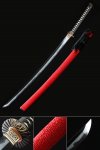 |
High-performance Japanese Katana T10 Folded Clay Tempered Steel |
i thought it was pretty cool. it came in great condition and is sharp. would recommend
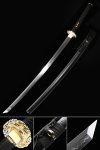 |
Japanese Katana Sword T10 Folded Clay Tempered Steel With Black Scabbard |
Authentic Japanese Katana Sword T10 Folded Clay Tempered Steel Real Hamon TK-JP-KT19135 . I am very pleased with the quality of this sword. Everything fits nice and tight, there is no blade rattle once in saya. The Tsuba (Guard) and Kashira (pommel) show no casting imperfections. The Tsuka ito (Cord Warp) is the best I have felt. All parts are of quality. Although I haven't used it Tameshigiri (test cutting), I expect the blade to perform well. Small negatives - first, be in no hurry to receive the sword...3.5 weeks for me. Second, the list of "Do not ...." with this sword seems excessive and sometimes humorous.
 |
Authentic Japanese Katana Sword T10 Folded Clay Tempered Steel Real Hamon |
I absolutely love my blade! Will be buying more from these guys in the future! Great quality and craftsmanship! Excellent!
 |
Handmade Japanese Katana Sword T10 Carbon Steel With Sunflower Tsuba |
Spectacular I'm very impressed and happy thank you all
 |
Japanese Katana Sword T10 Folded Clay Tempered Steel With Black Scabbard |
Excellent katana with great cutting sound through the air and good feel. Grip is perfectly sized for medium/large hands and blade/haman are flawless. Katana draws smoothly from the saya and presents with balance. Overall an excellent sword for the money. Happy with the purchase and quick delivery.
 |
Handmade Japanese Katana T10 Carbon Steel Hand Forged With Black Scabbard |
This was a gift for my bf and it’s such great quality. I looked at reviews before buying and it was definitely worth it. Looks amazing!
 |
Japanese Katana Sword T10 Folded Clay Tempered Steel With Black Scabbard |